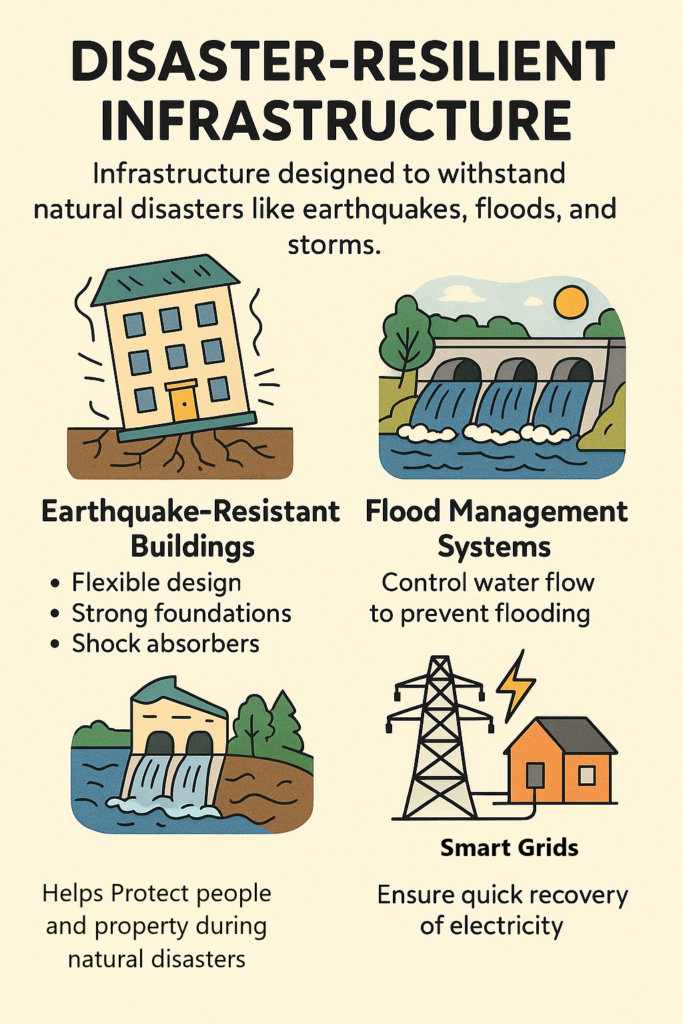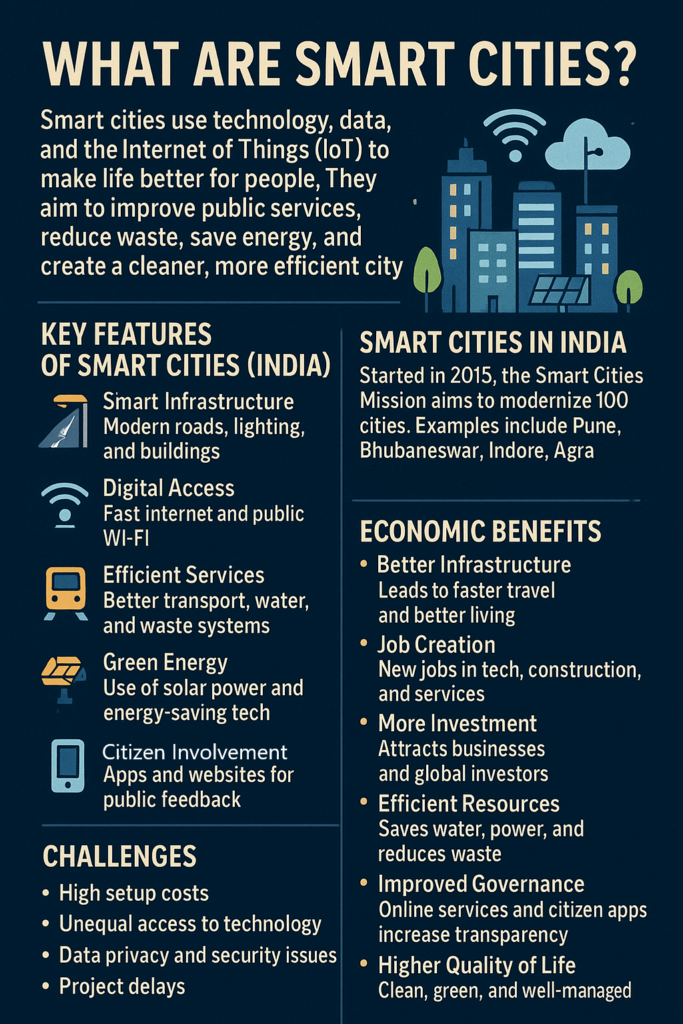What is Disaster-Resilient Infrastructure?
Disaster-Resilient Infrastructure refers to buildings, roads, bridges, and systems designed to withstand natural disasters like earthquakes, floods, and storms. The goal is to keep people safe, reduce damage, and recover quickly after a disaster.

Earthquake-Resistant Buildings
Earthquake-resistant buildings are designed to survive strong shaking without collapsing.
How Do They Work?
- Flexible Design: Buildings can sway slightly during an earthquake, which helps absorb the shock.
- Strong Foundations: Deep foundations anchor the building securely to the ground.
- Lightweight Materials: Using lighter materials reduces stress on the structure.
- Shock Absorbers: Some buildings have devices that act like car shock absorbers to reduce vibrations.
Example:
In Japan, many buildings are earthquake-resistant because the country frequently experiences earthquakes.
Flood Management Systems
Flood management systems help control water levels to prevent flooding in cities and communities.
Key Systems:
- Levees and Dikes: Barriers that protect areas from rising water.
- Drainage Systems: Pipes and channels that direct rainwater away from populated areas.
- Flood Barriers: Movable walls that can be raised during heavy rains to protect cities.
- Reservoirs and Retention Basins: Large tanks or areas designed to store excess water.
Example:
The Thames Barrier in London helps control the flow of the River Thames, protecting the city from flooding.
Smart Grids and Energy Resilience
A smart grid is an advanced electrical system that can detect problems, reroute power, and recover quickly during disasters.
How Smart Grids Help:
- Real-Time Monitoring: They can detect faults in the system instantly.
- Quick Recovery: If a power line goes down, the grid automatically reroutes electricity to affected areas.
- Renewable Energy Integration: Smart grids can manage energy from solar panels and wind turbines efficiently.
- Energy Storage: Batteries can store extra energy to use during outages.
Example:
During storms, smart grids in the United States help restore power faster because they detect outages quickly and reroute electricity.
Role of Technology in Infrastructure Safety
Technology plays a big role in making infrastructure disaster-resilient:
- Early Warning Systems: Sensors detect earthquakes, tsunamis, or floods, giving people time to evacuate.
- Building Information Modeling (BIM): Helps engineers design safer buildings using 3D models.
- Remote Monitoring: Drones and sensors monitor the condition of bridges, dams, and power lines.
- AI and Data Analysis: Predicts potential disasters and helps plan emergency responses.
- Earthquake Simulations: Virtual models test how buildings will respond to earthquakes before construction.
Example:
In New Zealand, advanced sensors and AI monitor earthquake activity, helping to predict and respond to seismic events quickly.
Summary:
- Disaster-Resilient Infrastructure helps protect people and property during natural disasters.
- Earthquake-Resistant Buildings are designed to sway and absorb shock without collapsing.
- Flood Management Systems control water flow to prevent flooding.
- Smart Grids ensure quick recovery of electricity during power outages.
- Technology like sensors, AI, and simulations helps design safer infrastructure and respond to disasters faster.











